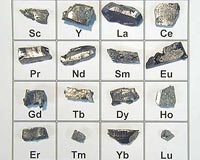| . |  |
. |
Sydney (AFP) Feb 23, 2010 Mining is returning to boom times in Australia, a top central bank official said Tuesday, thanks to a spike in investment driven by the rampant resources appetites of India and China. Deputy Reserve Bank governor Ric Battellino said the Australian economy was experiencing a surge in mining activity and investment as the effects of the global financial crisis recede. The growth "is very broad based across a range of resources, but the core part centres on the large expansion in the iron ore, coal and gas industries," Battellino said in a speech to the Sydney Institute foreign policy thinktank. "It has been, to a large degree, driven by demand for resources by emerging economies, with China being the most significant." The fifth major mining expansion in Australia's history, Battellino said the current boom started in 2005 and was "severely testing the productive capacity and flexibility of the economy" by early 2008. "That all changed in the second half of 2008, as the effects of the mining boom were offset by the impact of the global financial crisis," Battellino said. "However, now that this has passed, the underlying dynamics of the resource boom are starting to re-appear." Both the volume and price of resources exports had risen strongly and now accounted for a significant share of Australia's GDP, he said. The current boom also differed from previous expansions because it had been preceded by the floating of the Australian dollar on the open market in 1983, helping limit inflationary pressures. Battellino said previous mining surges had typically lasted no longer than 15 years, but how long the current expansion would last was uncertain. "On this occasion, the growth potential of countries such as China and India suggests that the expansion in resource demand could continue for an extended period," he said, adding that it could be as long as 20 years. Rapidly industrialising China has become Canberra's biggest two-way trading partner with deals worth 76 billion Australian dollars (68 billion US) over the past financial year as it sucks in vast quantities of Australia's resources. Australia, buoyed by its strong recovery from the downturn, is pushing for free-trade agreements with Japan and China and is studying a further deal with India. The country relied heavily on Asia as it became the only advanced economy to avoid recession during the downturn, with Japan, China, South Korea and India its top four export markets.
Share This Article With Planet Earth
Related Links Global Trade News
 The world's next resource conflict
The world's next resource conflictBerlin (UPI) Feb 22, 2009 The next resource conflict could be about minerals and rare earth elements needed to fuel the green economy, as China, which supplies most of the minerals, is considering limiting exports. There is great hope for a green boom to transform the CO2-heavy world economy into one that is less dependent on fossil fuels and more sustainable. Experts envision solar panels and wind turbines to p ... read more |
|
| The content herein, unless otherwise known to be public domain, are Copyright 1995-2010 - SpaceDaily. AFP and UPI Wire Stories are copyright Agence France-Presse and United Press International. ESA Portal Reports are copyright European Space Agency. All NASA sourced material is public domain. Additional copyrights may apply in whole or part to other bona fide parties. Advertising does not imply endorsement,agreement or approval of any opinions, statements or information provided by SpaceDaily on any Web page published or hosted by SpaceDaily. Privacy Statement |